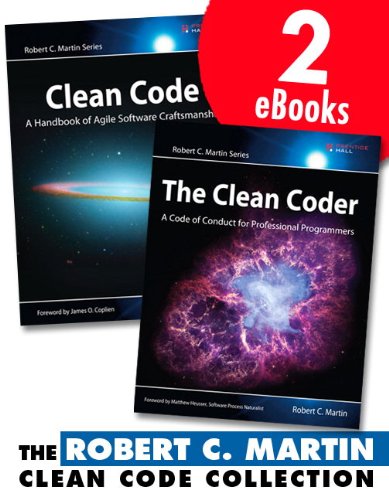The Robert C. Martin Clean Code Collection epub
Par evans andrea le lundi, juin 19 2017, 02:38 - Lien permanent
The Robert C. Martin Clean Code Collection. Robert C. Martin

The.Robert.C.Martin.Clean.Code.Collection.pdf
ISBN: 0132911221, | 884 pages | 23 Mb

The Robert C. Martin Clean Code Collection Robert C. Martin
Publisher: Prentice Hall
Practical Unit Testing with TestNG and Mockito by Tomek Kaczanowski; Love'em or Lose'em by Beverly Kaye, Sharon Jordan-Evans; Rework by Jason Fried, David Heinemeier Hansson; The Clean Coder: A Code of Conduct for Professional Programmers by Robert C. I use the following system for comments: Comments explaining one line of code or a . Try-catch is responsible for handling an error, . It has taken me three years to get around to Ruby. If I was to quickly asses the average age, I'd say 20-35, but we do not collect this kind of data. Ruby is a decent performer and to be a You can check increasing the default Ruby garbage collection limit as it will be helpful. After reading "Clean Code" I've decided to finally give it a try, and half a year of doing this kind of "extract-till-you-drop" (term taken from http://www.infoq.com/presentations/Robert-C.-Martin-Bad-Code), I can say that it works extremely well in real life projects. For-each responsibility is to iterate over a collection, and call someone else to do the job on an element. FTSearch() with a query that will not return anything to get an empty document collection for later use. I strongly recommend reading “Clean Code” by Robert C Martin – there is a whole chapter dedicated about the commenting thing and it describes perfectly exactly what I mean and strive for. This post is a review of the book Clean Code: A Handbook of Agile Software Craftsmanship by Robert C. No doubt reading David A Black book -The Well Grounded Rubyist and Robert C. 8 women, 4 of which are programmers [What about the other Books. Martin well known as “Uncle Bob” book – Clean Code, A handbook of Agile Software Craftmanship have helped me. Else on Your worksite – then commenting is not necessary.